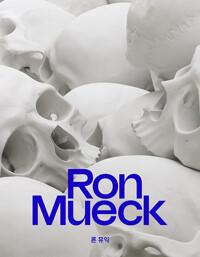책 이미지

책 정보
· 분류 : 국내도서 > 예술/대중문화 > 미술 > 도록
· ISBN : 9788963033341
· 쪽수 : 583쪽
· 출판일 : 2022-10-25
책 소개
목차
7 Youn Bummo_Korean Art: Dynamism and Expansion
PART 1 FROM “CALLIGRAPHY AND PAINTING” TO “FINE ART”
15 Kim Inhye_Introduction
21 Kang Mingi_A Transformation in Traditional Korean Painting
39 Mok Soohyun_The Emergence of New Art Forms and the Reorganization of the Art
Institutions During the Colonial Period
53 Seo Yuri_The KAPF Movement: Art for People and Art for Social Revolution
65 Kim Hyunsook_The Acceptance of Modern Art and the Indigenization of Oil Painting
85 Kwon Heangga_The New Visual Culture of Photography and Print Media
PART 2 ART IN A TIME OF WAR AND DIVISION
101 Liu Jienne_Introduction
105 Shin Soo-kyung_Art in an Era of Reform: Beyond the Crisis of Liberation and the Korean War
125 Hong Jisuk_Socialist Realism and Juche Art: The Formation of North Korean Art in 1945?67
137 Park Soojin_Art of the Korean Diaspora
153 Cho Eunjung_The National Art Exhibition and the Development of the Art World After
Korean Independence
PART 3 THE TRADITION/MODERNITY DYNAMIC IN THE MODERNIZATION ERA
175 Park Youngran_Introduction
181 Chung Moojeong_The Development of Korean Modern Art and International Exchange
197 Kho Chung-Hwan_The Expansion of Contemporary Korean Printmaking in the Postwar Period
211 Kim Yisoon_The Development of Korean Sculpture from the 1950s to the 1970s
229 Cho Soojin_Experimental Art: The Beginning of Moving Beyond Conventional Genres
247 Kim Keongyeon_Ink Painting from 1945 to the 1970s: To Inherit or Confront Tradition
265 Kwon Young-jin_Monochrome or Dansaekhwa: The Making of Contemporary Abstraction in
Combination with Korean Tradition
PART 4 DEMOCRATIZATION AND THE PLURALIZATION OF ART
285 Kang Soojung_Introduction
291 Gim Jonggil_Minjung Art Movement
315 Kim Hyeonjoo_The Polyphony of Feminist Art in Korea
335 Song Heekyung_Hangukhwa: Late Twentieth Century Korean Ink Painting
357 Choi Bum_National Mega-Events and the Formation of Korean Design
371 Chung Dahyoung_Writing Architecture in Prose: Korean Urban Architecture in the Late
Twentieth Century
383 Lim Shan_1980s Korean Art Beyond Modernism
399 Song Sujong_The Development of Contemporary Photography: Media Experiments and
Diverse Perspectives
PART 5 GLOBALISM AND CONTEMPORARY KOREAN ART
419 Kim Kyoung-woon_Introduction
423 Yang Eunhee_The Globalization of Contemporary Korean Art in the Era of Biennales
439 Shin Chunghoon_Korean Art and Public Life Since the 1990s
455 Bae Myungji_Korean Video Art Since the 1990s
477 Woo Jung-Ah_The Conceptual Turn of South Korean Art After 1990
495 Helen Jungyeon Ku_The Collective as a New Form of Art Production Since the 2000s
509 Ryu Hanseung_The New Wave of Art: Writing, Movement and Sound
525 Chronology
553 Glossary
557 Contributors
561 List of Plates
569 Index
저자소개
책속에서





Grounding themselves in professional education yet pursing individualistic styles, these artists endeavored to become painters in the modern sense. The self-esteem and pride of this generation was explicitly expressed in Lee Qoede's Self-Portrait in Traditional Coat (late 1940s), which was produced immediately after the country's liberation from Japan. Painters of this generation can be viewed as imposing a shared duty upon themselves, albeit to varying degrees and using different methods. This collective mission was to determine how to keep traditional Korean aesthetics in harmony with new Western art trends. Each using their own specific means, the painters responded in their works to the question of how historical elements such the aesthetics of simple white porcelain, the imagination and vigorous spirit of ancient Koreans as seen in tomb murals of the ancient Korean kingdom of Goguryeo, the elegant lines of ink-and- wash paintings, and the modest and amiable styles of the Joseon Dynasty could be incorporated into the oil painting forms introduced from the West.「PART 1 FROM "CALLIGRAPHY AND PAINTING" TO "FINE ART"_Introduction」,Kim Inhye
The political turmoil that followed in the aftermath of independence-the division into two Koreas, and the ideological conflicts between capitalism and socialism, and social conservatives and liberals-pushed many artists to more intensively search for a means through which to manifest their concerns. Even amid the chaos of the various conflicting associations and organizations, artists right after independence proactively organized and participated in exhibitions to show the types of work and ideas that they had been prevented from presenting in the previous years. The first large scale exhibition was the Art Exhibition in Celebration of National Independence, the first exhibition organized by the Korean Art Construction Headquarters, held at Seokjojeon Hall of Deoksugung Palace from October 20 to 30, 1945. This exhibition, featuring 132 works by ninety- seven artists from all over the country, was organized in just two months, but was considered a successful event in marking the foundation of the country.「PART 2 ART IN A TIME OF WAR AND DIVISION_Introduction」,Liu Jienne








































